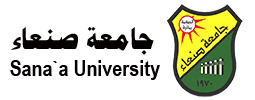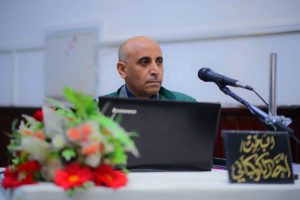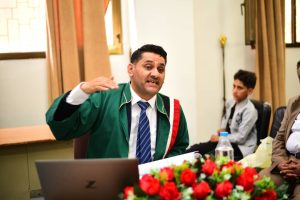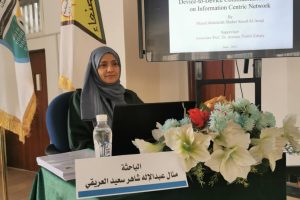Public PhD Viva-Voce Examination of Randa khamees Ahmed Saad Al-Maaedi, from Department of Archaeology and Tourism, Faculty of Arts & Humanities – Sana’a University
- Categories Letters and Promotions - Graduate Studies, news, Regulations - Postgraduate Studies
- Date December 28, 2024
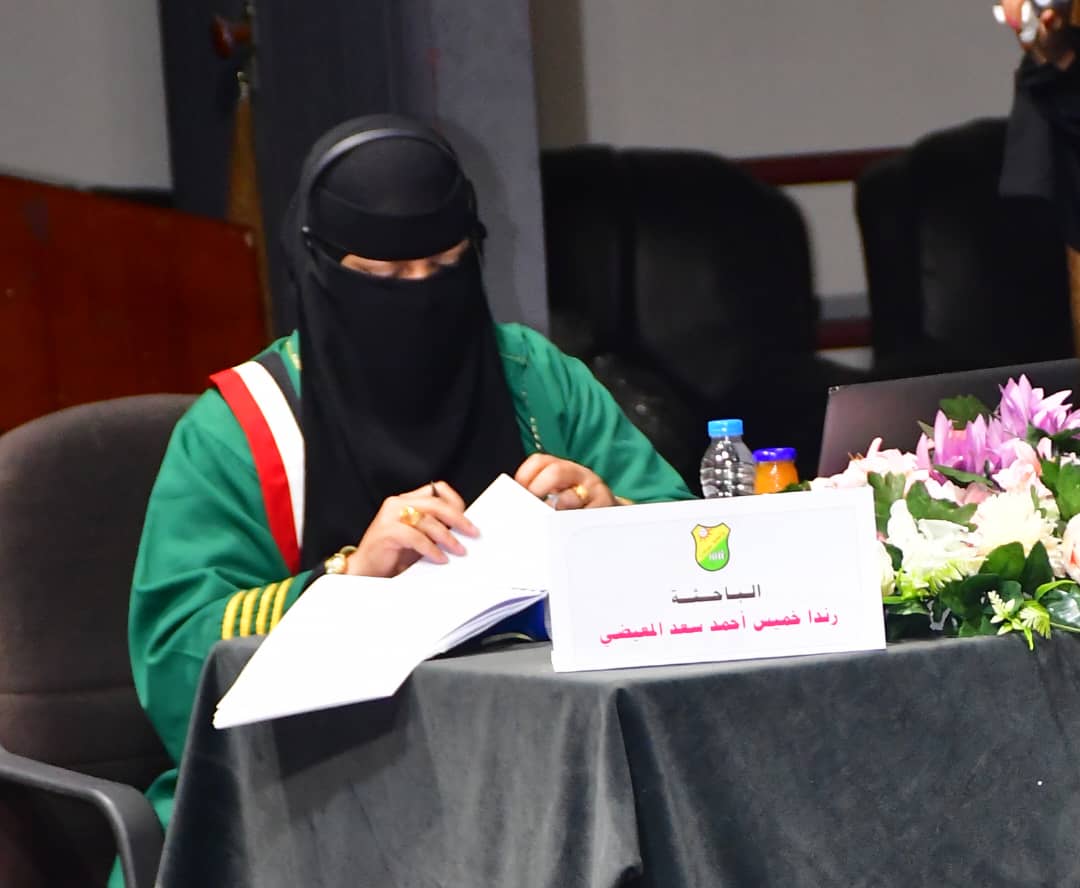
Ms. Randa khamees Ahmed Saad Al-Maaedi has successfully awarded her PhD from the Department of Archaeology and Tourism, majoring in Islamic Architecture, from the Faculty of Arts and Humanities at Sana’a University. Her dissertation, titled “Civil Architecture in Thula City: An Architectural and Archaeological Study,” was defended on Wednesday, 24 Jumada II 1446 Hijri, corresponding to December 25, 2024.
The Viva-Voce Committee, which was formed based on a resolution issued by the Post-Graduate Studies and Scientific Research Council, consisted of the following:
1. Prof. Abdulrahman Hassan Jarallah, Internal Examiner, Sana’a University, Chair.
2. Prof. Ali Saeed Saif, Main Supervisor, Sana’a University, Member.
3. Prof. Mubarak Mohammad Al-Dhamari, External Examiner, Dhamar University, Member.
The primary objectives of the dissertation were to document various types of civil structures within Thula and to highlight their architectural and decorative elements. The dissertation also aimed to analyze the environmental and geographical influences that shaped these constructions. Furthermore, it sought to determine whether these structures adhered to a unified architectural pattern observed in other Yemeni cities facing similar conditions. The study aspires to provide scholarly material that addresses gaps identified in previous research, thereby enriching the body of knowledge pertinent to urban architecture across both Eastern and Western Islamic contexts. This contribution is expected to enhance Islamic archaeological studies broadly while specifically advancing Yemeni Islamic archaeological scholarship.
The findings of the dissertation revealed several significant insights:
1. The city of Thula experienced periods marked by both conflict and stability, notably when it served as the capital of the Zaidi state during the tenth century Hijri (sixteenth century AD). This era is characterized by a peak in prosperity for Thula, with most surviving civil structures dating back to this period.
2. Residential architecture within Thula exhibited diversity in scale; some buildings adhered to a tower system while others comprised medium-sized or smaller homes. The study underscored that residential architecture in Thula represents a vital and authentic facet of Islamic architectural history.
3. The palace of Imam Yahya bin Hamid al-Din emerged as one of the historical palaces renovated during his reign, serving both as a residence and a governmental seat; it is believed to date back to Imam al-Mutahhar bin Sharaf al-Din’s rule in the tenth century Hijri sixteenth century AD.
4. Additionally, it was discovered that Rizq al-Thulaia’s house in Nabhan neighborhood belonged to one of the Jewish families residing in Thula prior to their migration to Palestine.
5. The study also noted similarities between Jaadan and al-Mayah ponds and those found in ancient Yemeni architecture regarding their architectural components.
In her dissertation, Al-Maaedhi proposed several recommendations:
1. It is imperative for the General Authority of Antiquities to prioritize attention towards Thula city by restoring structures damaged due to human activities or natural events such as rainfall.
2. There should be efforts made towards rehabilitating Thula city with an aim to reestablish it as a tourist destination.
3. Encouragement should be extended towards local residents for them to provide documents and manuscripts that could significantly contribute to enriching future research endeavors.
The Viva-Voce was attended by several academics, researchers, students, and several colleagues and family members of the researcher.
Previous post
Public MA Viva-Voce Examination of Ms. Iman Mohammad Hussein Saboula, from the Department of French Language and Literature, Faculty of Arts & Humanities - Sana'a University
Next post
